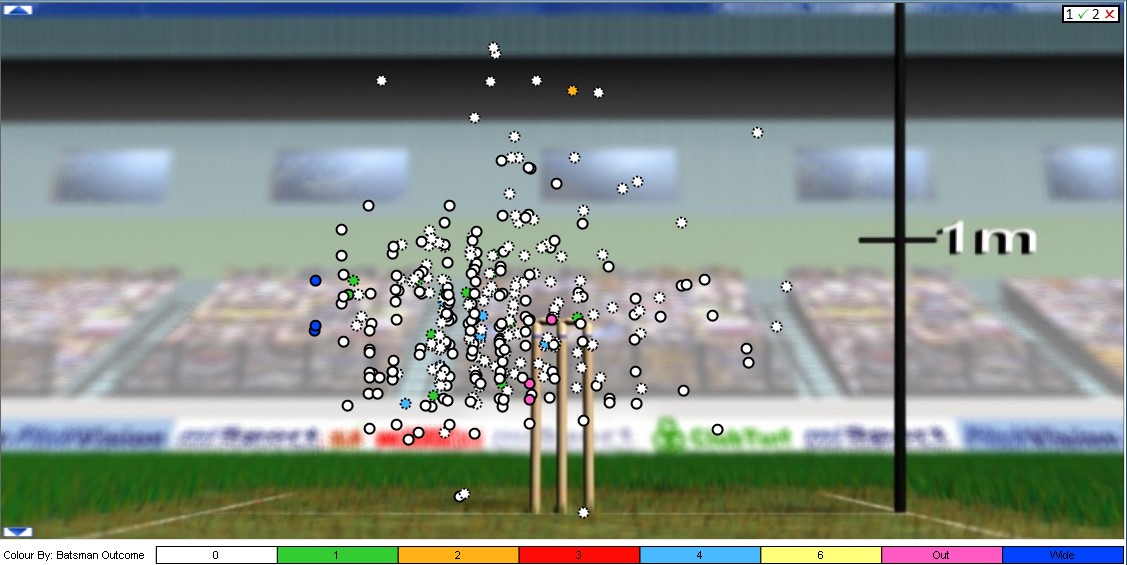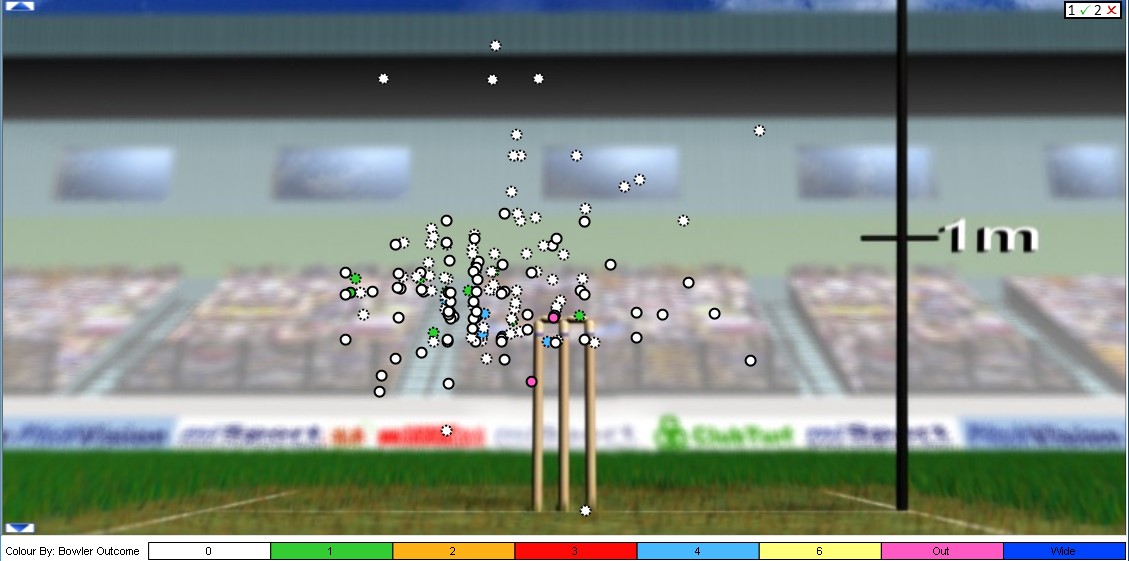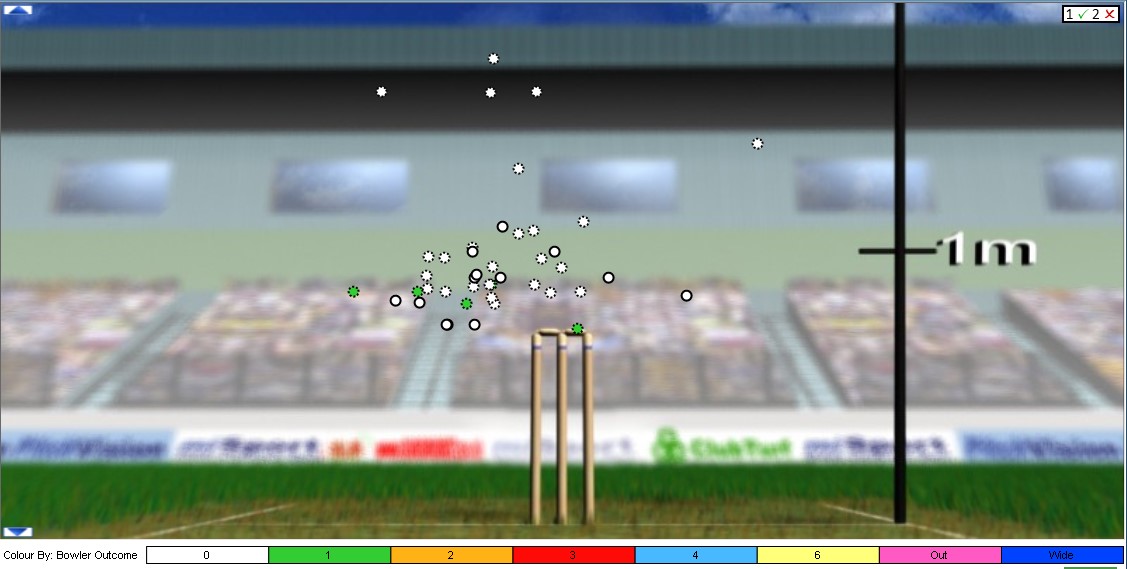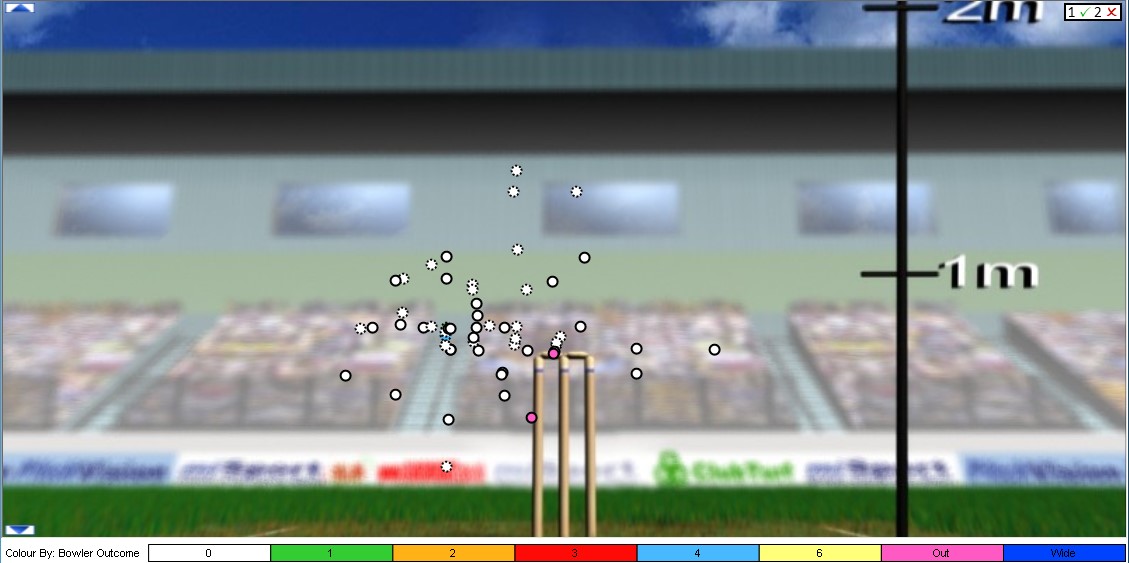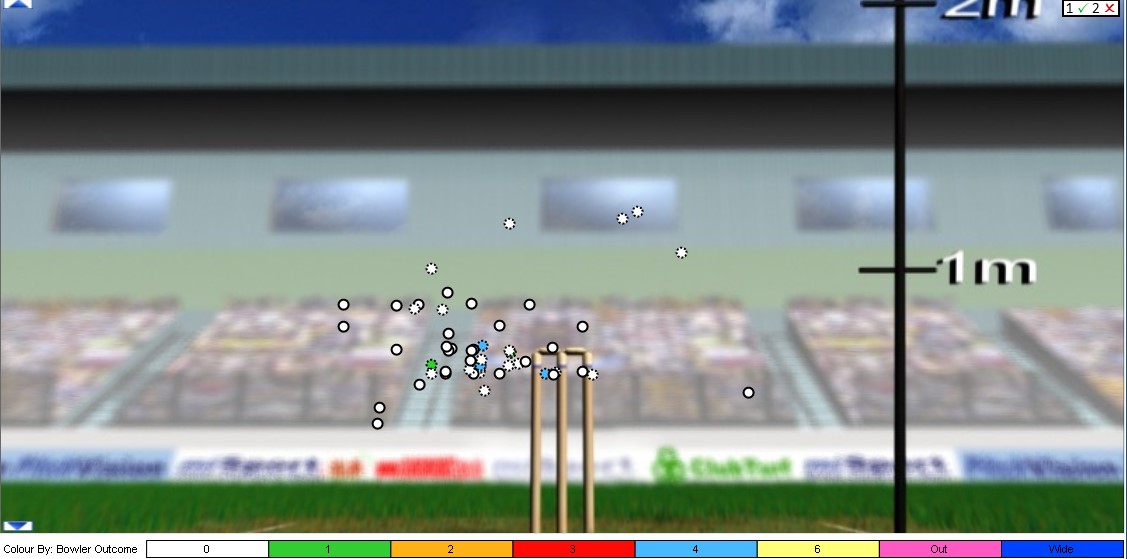Case Study: Using Analysis to Help a Fast Bowler Take Wickets
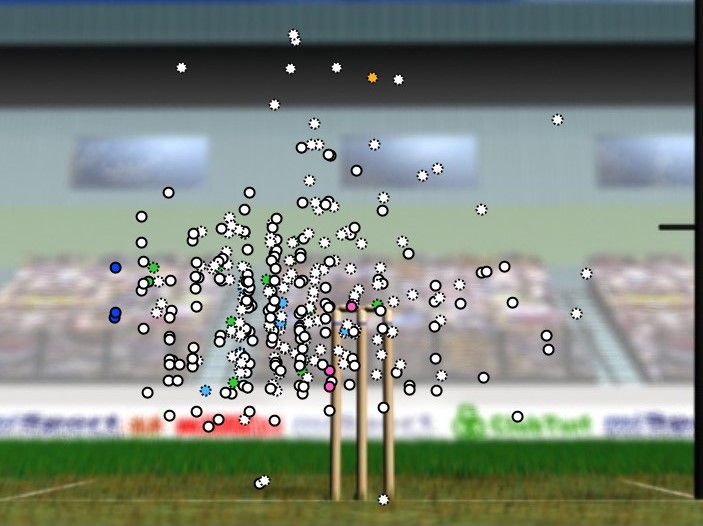 Analyst Waqas Zafar returns to assess a bowler based on bowling lengths.
Analyst Waqas Zafar returns to assess a bowler based on bowling lengths.
Using PitchVision, a club bowler bowled 360 balls in the nets.
Here is a breakdown of the lengths he bowled:
| Length | Balls | % of the balls | ||
|---|---|---|---|---|
| Short | 44 | 12.22% | ||
| Good | 158 | 43.89% | ||
| Full | 158 | 43.89% | ||
Here is the beehive placement of all the balls:
Let’s look in more detail at each length:
Short balls
This bowler looks to bowl fuller, so bowled few balls short. His average pace was 74.67mph. He picked up a wicket from this length, getting it to nip back from the shorter side, keeping lower than usual and smashing the top of off stump.
However, it is clear in general that he does not wish to bowl short very often, which is a reasonable tactic for wicket taking at club level.
Good length
This is the length where the batsmen find slightly harder to score runs from as the ball hitting this length is not full enough for the drive and not short enough for the cut or pull.
To hit the top of off stump, every bowler has to hit a different length in order to achieve it. A tall bowler will bowl a slightly shorter length to hit the top of off and a shorter bowler will have to slightly pitch it up.
We can see that a few of these deliveries have nipped back but they are going down the leg side by quite a margin. However, there are a number of balls that are just outside off stump and wider. The average line from this length is sixth stump.
The seamer has found deviation. This is a good sign because lateral movement from this length is effective. However, the bowler can adjust his lines and lengths depending on the strength/weaknesses of the batsman.
Average pace was 72.15 mph.
This seamer has set his good length from 8–5m from the stumps, and using PitchVision we can drill down into each metre. This reveals a few things.
Back of a length
There are 43 balls in the 8–7m range. Five of the balls are far above and won’t cause problems. A Couple of deliveries are on top of off stump, some of them are sliding down and one ball is hitting middle and leg stump has been picked off for a run.
If I ignore the five balls that are bouncing quite high, the average bounce is 0.90 m. This means that the batter has to adjust off the back foot and this can bring in dismissals where batsmen are trying to force the ball off the back foot and are nicked off.
Middle length
In the 7–6m range, 58 deliveries landed. Average deviation was 0.8 degrees which is good enough to bring the keeper and slips into play. The pink balls (wicket balls) have come from this area and this is because of the variable bounce the seamer has been getting. For example, the wicket ball hitting the center of the off stump pitched 6.8 m from the stumps, whereas one of the balls bouncing above the 1 m mark pitched 6.1 m from the stumps. So the batter would definitely have been in a spot of bother as if gets forward to the ball pitching at 6.1 m and it takes off from this length.
There have been balls on and around off stump that have deviated and bounced at normal heights and they will encourage the batsman to get forward, bringing in the vertical bat shots, challenging both edges of the bat. A bit more consistency is required though as we can see a lot of wide deliveries.
Full length
53 balls have been bowled in in the 5–6m zone and the bowler has conceded three boundaries from this area. However, average deviation has been 0.9 degrees. Average bounce is 0.74 which will encourage front foot play more often than not. Again, we can see couple of deliveries deviating outside off but the bowler has to be slightly more consistent with his lines to cause problems for the batsmen.
Fuller balls
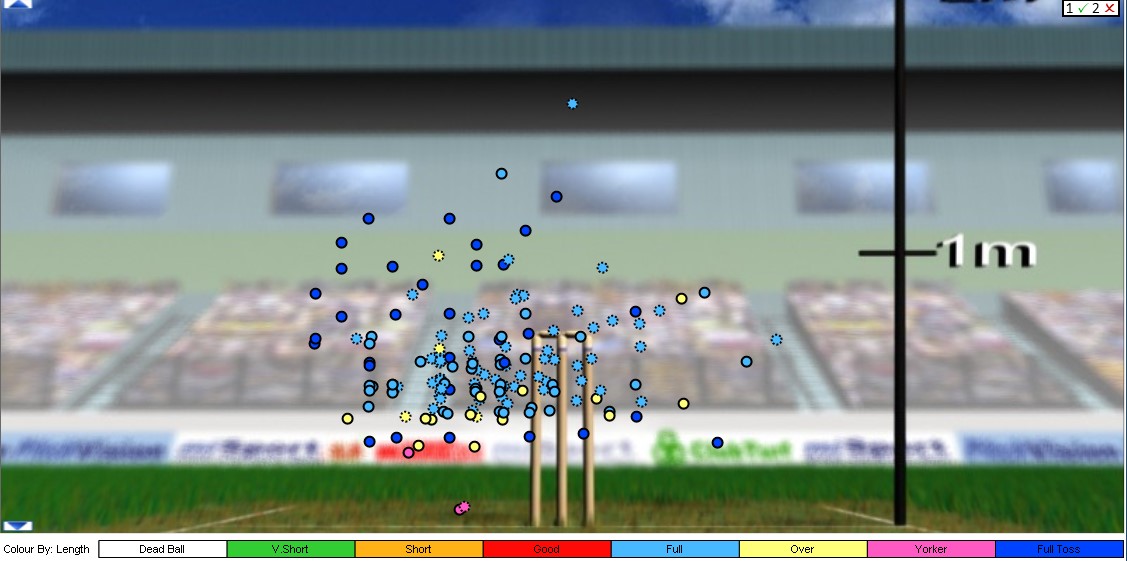
Finally, balls that pitch past the 5m range (5–0m). Here the bowler has pitched the ball up frequently, ending up with full tosses as well possibly because he has looked to hit the block hole.
Pitching the ball up isn’t a bad idea but batters absolutely love long half volleys and many were put away as expected.
Based on this analysis, the bowler can work on more specific areas such as a straighter line and maintaing good lengths. It also demonstrates how "letting the ball do the work" is important as there is much variation in deviation, and bounce that can lead to wickets no matter what the bowler's overall accuracy.
- Login to post comments

